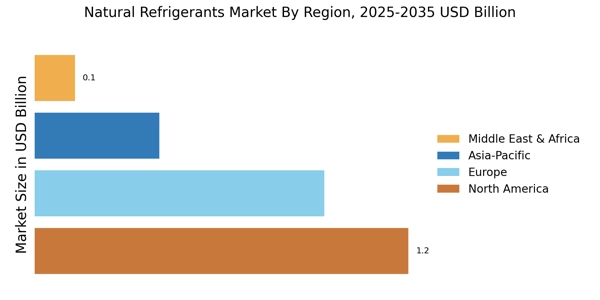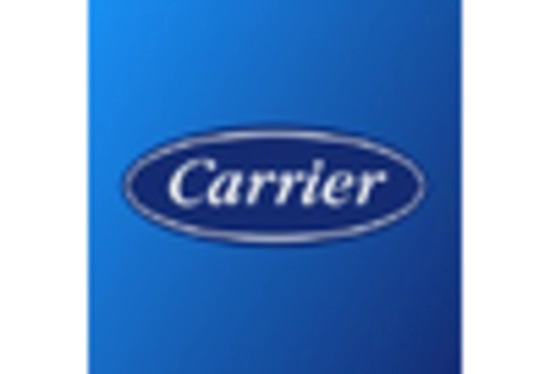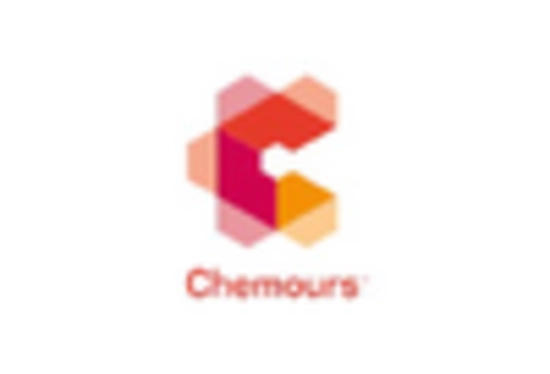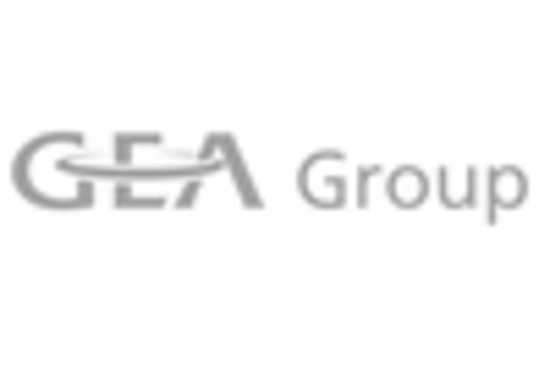Rising Demand for Sustainable Solutions
The Natural Refrigerants Market is witnessing a notable increase in demand for sustainable solutions across various sectors. As consumers become more environmentally conscious, businesses are compelled to adopt practices that align with sustainability goals. Natural refrigerants, such as ammonia and hydrocarbons, are gaining traction due to their low global warming potential and minimal environmental impact. Market analysis indicates that sectors like food and beverage, pharmaceuticals, and HVAC are increasingly integrating natural refrigerants into their operations. This shift is not merely a trend but appears to be a fundamental change in how industries approach refrigeration. The growing emphasis on corporate social responsibility and sustainability initiatives is likely to propel the Natural Refrigerants Market forward, as companies seek to enhance their brand image while contributing to environmental preservation.
Economic Incentives and Financial Support
Economic incentives and financial support mechanisms are emerging as key drivers for the Natural Refrigerants Market. Governments and regulatory bodies are increasingly offering subsidies, tax breaks, and grants to encourage the adoption of natural refrigerants. These financial incentives lower the initial investment barriers for businesses, making it more feasible to transition from traditional refrigerants to natural alternatives. For instance, various countries have introduced programs aimed at supporting the installation of energy-efficient refrigeration systems that utilize natural refrigerants. Market data suggests that such initiatives are likely to stimulate growth in the Natural Refrigerants Market, as they not only promote environmental sustainability but also enhance economic viability for businesses. This financial backing could lead to a more rapid adoption of natural refrigerants, ultimately contributing to a more sustainable refrigeration landscape.
Regulatory Compliance and Environmental Standards
The Natural Refrigerants Market is experiencing a surge in demand due to stringent regulatory compliance and environmental standards. Governments worldwide are implementing policies aimed at reducing greenhouse gas emissions, which has led to a shift towards natural refrigerants. For instance, the European Union's F-Gas Regulation has set ambitious targets for reducing hydrofluorocarbon (HFC) usage, thereby promoting the adoption of natural alternatives. This regulatory landscape not only encourages manufacturers to innovate but also compels end-users to transition to more sustainable options. As a result, the market for natural refrigerants is projected to grow significantly, with estimates suggesting a compound annual growth rate (CAGR) of over 10% in the coming years. Such regulations are likely to drive investments in the Natural Refrigerants Market, fostering a more sustainable future.
Technological Innovations in Refrigeration Systems
Technological advancements play a pivotal role in shaping the Natural Refrigerants Market. Innovations in refrigeration systems, such as improved energy efficiency and enhanced performance, are making natural refrigerants more viable. For example, advancements in CO2 refrigeration technology have led to systems that are not only efficient but also capable of operating in diverse climatic conditions. The integration of smart technologies, such as IoT and AI, further optimizes the performance of these systems, making them attractive to businesses seeking to reduce operational costs. Market data indicates that the adoption of these technologies is expected to increase, with a notable rise in the installation of natural refrigerant systems across various sectors, including commercial refrigeration and air conditioning. This trend suggests a robust growth trajectory for the Natural Refrigerants Market, driven by continuous innovation.
Consumer Preferences Shifting Towards Eco-Friendly Products
Consumer preferences are increasingly shifting towards eco-friendly products, significantly impacting the Natural Refrigerants Market. As awareness of climate change and environmental issues grows, consumers are more inclined to support brands that prioritize sustainability. This shift in consumer behavior is prompting companies to reevaluate their refrigeration practices and consider natural refrigerants as viable alternatives. Market Research Future indicates that businesses adopting eco-friendly refrigerants are likely to gain a competitive edge, as consumers actively seek out products that align with their values. This trend is particularly evident in sectors such as retail and hospitality, where customer experience and brand reputation are paramount. The Natural Refrigerants Market stands to benefit from this evolving consumer landscape, as companies strive to meet the demand for sustainable solutions.


















Leave a Comment